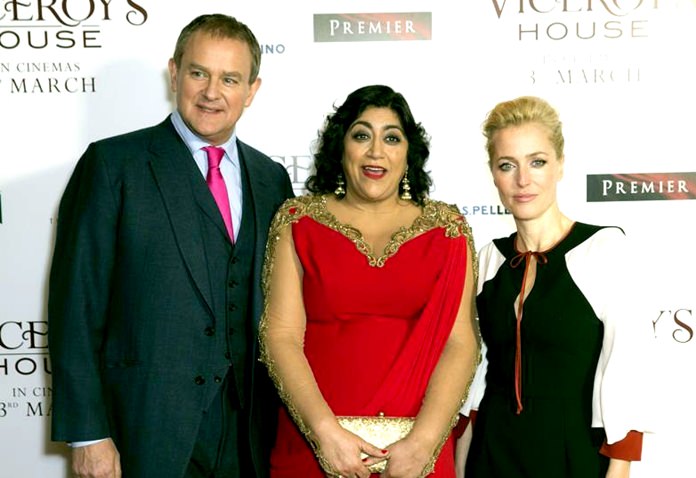
New York (AP) — Gurinder Chadha hoped her new film would be very personal, one that explored her family’s South Asian history. But when it was done, it turned out to be the story of a few more people — millions, actually.
“Viceroy’s House” explores how India and Pakistan were carved from the former British Empire in 1947, triggering one of the modern world’s bloodiest chapters in which scores of Hindus and Muslims fled their homes.
“Very few people know what actually happened in the last days of the British Raj and very few people know that it was the biggest forced migration in human history — 14 million people became refugees overnight. And some of those were my family,” said Chadha.
To tell this complex, emotional story, the “Bend It Like Beckham” director and co-writer came up with an interesting recipe: Onto the epic sweep of history she built both a “Romeo and Juliet” love story and a “Downton Abbey”-style split between gentry and servants.
The movie traces the negotiations between Lord Mountbatten, the last viceroy of India, and the country’s political leaders Jawaharlal Nehru, Mohandas Gandhi and Mohammad Ali Jinnah, while interweaving the stories of Indians downstairs who are butlers and servants. There’s also a love story between a Hindu valet and a Muslim translator.
“This was my opportunity to make a great British costume drama,” said Chadha. “By going this way, hopefully, the audience feels very comfortable in watching a period drama, and then gradually I shift the emotional center of the film in a way that I want you to feel what it was like for ordinary people at that time.”
“Viceroy’s House” stars Hugh Bonneville as the viceroy — making that “Downton Abbey” connection clear — as well as Gillian Anderson as his wife, Huma Qureshi as the translator, Michael Gambon as the viceroy’s lieutenant and South Carolina-born Manish Dayal as the valet.
“What really informed me throughout the process was Gurinder. She is a force of nature and she connected to this story in such a visceral way. It was deeply personal for her,” said Dayal.
Chadha’s grandparents lived through the tumultuous events and ended up on the Pakistani side of the border. She consulted family members, historians, Mountbatten’s daughter, key aides and butlers. She tried to be as accurate as possible, finding the same tailor who outfitted the imperial uniforms for the British and cheering on Neeraj Kabi, who plays Gandhi, as he went on a crash diet of goat curd to better embody the Indian icon.
“I wanted to tell my story, my history, from my perspective, because I’d always been told the British Empire version of history. And here I had the opportunity to tell my version as a British Indian woman,” said Chadha. “We don’t get to tell our own history in our own words and we certainly don’t ever get to challenge the history of empire.”
Though the violence of partition left as many as 2 million dead, there are few clear villains in the film. That was intentional by Chadha, a former BBC reporter who says she still looks for balance.
“I didn’t necessarily want to make an angry film,” she said. “If I made an angry film, I would be putting the blame on somebody and then we could all go, ‘Oh, OK.’ I felt like I wanted us all to take some responsibility for what happens in these situations.”
Even so, the film has gotten a chilly reception in Pakistan, where it was banned over its portrayal of Jinnah. Chadha, whose fellow screenwriters include her husband, Paul Mayeda Berges, and Moira Buffini — was ready for a backlash.
“There was a point when I thought, ‘Oh my goodness. How many people can I really upset here because I am taking on the British Empire version of history, I’m exploring how Britain and Pakistan and India came together in ’47 to create these two countries and I’m dealing with one of the biggest, tumultuous, sad events in all our collective history.’ Obviously I knew that there was going to be trouble at some point. There just has to be.”




